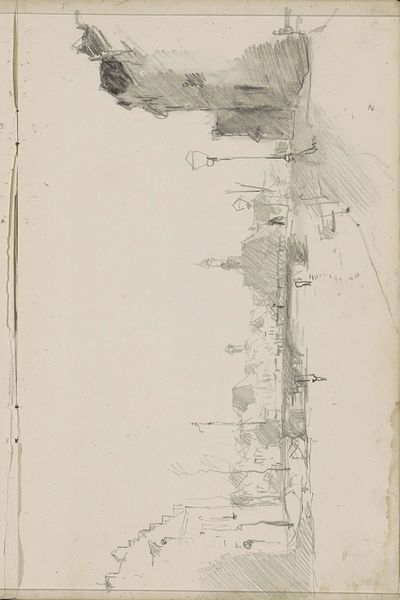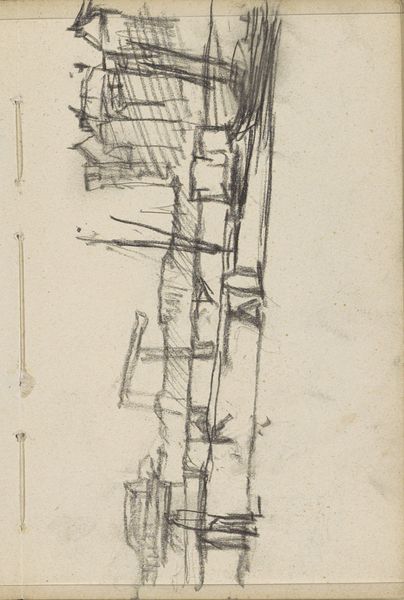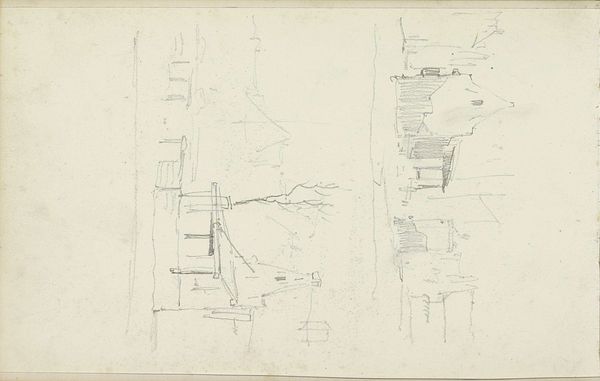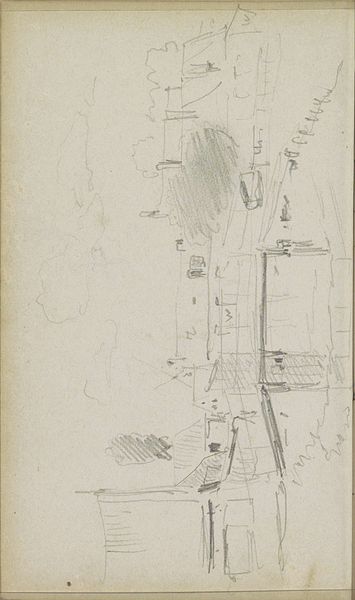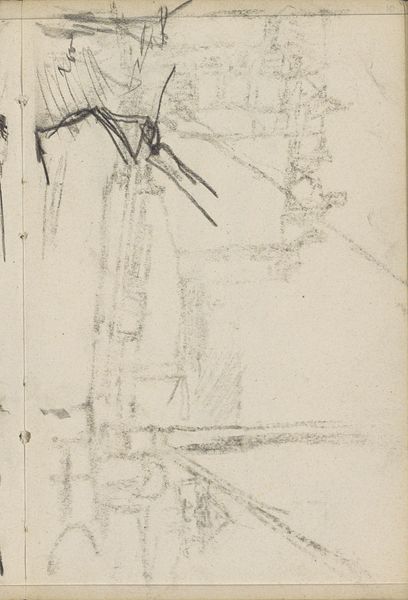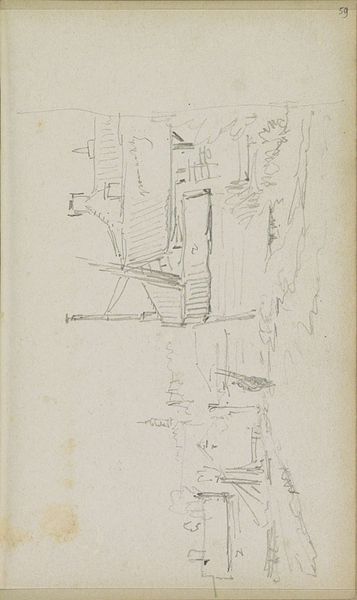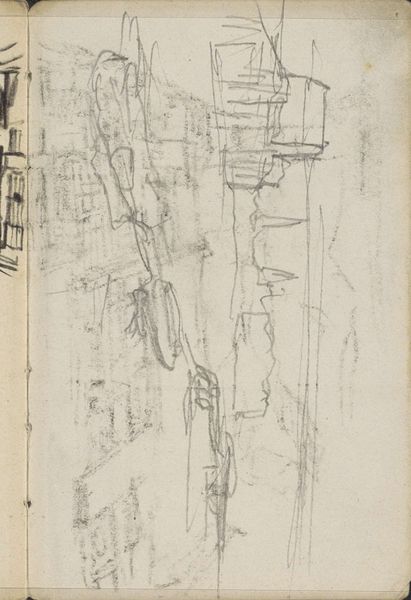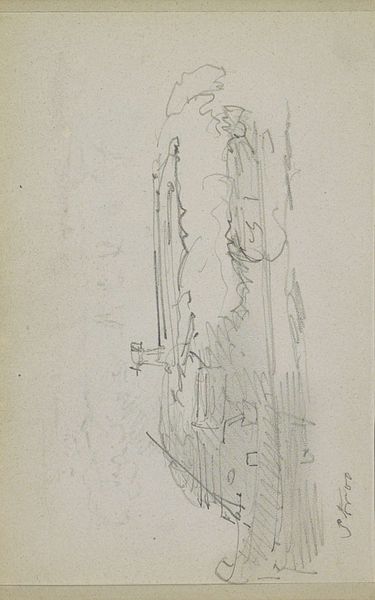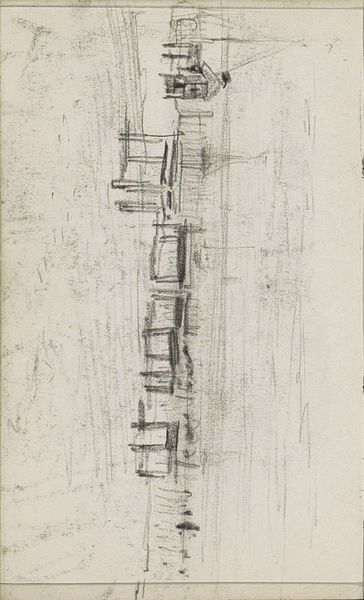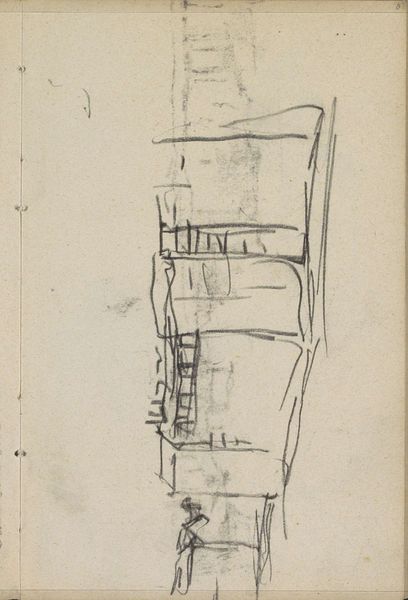
Copyright: Rijks Museum: Open Domain
Editor: This is George Hendrik Breitner's "Gezicht op de Overtoom te Amsterdam," created around 1902 with pencil on paper. It depicts a street scene, but it feels so fleeting and unfinished, almost dreamlike. What do you see in this piece? Curator: This sketch pulses with a tension, doesn’t it? The Overtoom, a bustling Amsterdam thoroughfare, is distilled to its skeletal form. Note how Breitner doesn't simply *record* the buildings. Instead, he uses the stark lines to evoke the feeling of urban expansion and industrial change. Look at the repetition of lines – they mimic the rhythm of construction, don’t they? This is not just architecture; it is the embodiment of Amsterdam’s rapidly evolving identity. Editor: That's interesting. I see the rapid evolution of Amsterdam represented through architectural forms as symbolic language. So the incomplete, sketch-like quality adds to the feeling? Curator: Exactly! Think about the symbolism of light in urban settings. The harsh, unmodulated light reinforces this sense of transformation and perhaps a kind of alienation that can arise amidst rapid progress. Breitner invites us to feel the city not only as a place, but as a psychological space too. Editor: That gives me a new perspective. It's not just a landscape, it's a symbol of the city's state of mind, caught in transition. Thanks for sharing that. Curator: And thank you for noticing! The enduring power of images lies in their capacity to carry such multifaceted cultural memory, isn’t it true?
Comments
No comments
Be the first to comment and join the conversation on the ultimate creative platform.
